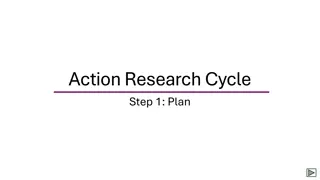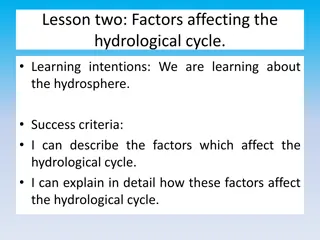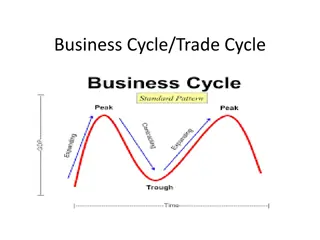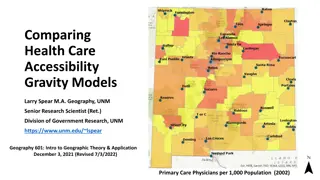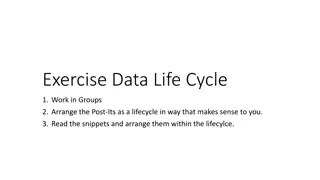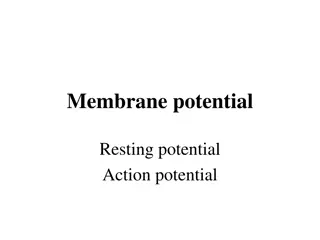Analyzing Data in Action Research Cycle Step 3
In the step 3 Analyze of action research cycle, teachers systematically observe and analyze data to understand its effects. Analyzing data involves organizing, refining, and categorizing information into qualitative and quantitative data sets. This process enables educators to draw meaningful insights from their observations and make informed decisions based on the data collected.
Download Presentation

Please find below an Image/Link to download the presentation.
The content on the website is provided AS IS for your information and personal use only. It may not be sold, licensed, or shared on other websites without obtaining consent from the author.If you encounter any issues during the download, it is possible that the publisher has removed the file from their server.
You are allowed to download the files provided on this website for personal or commercial use, subject to the condition that they are used lawfully. All files are the property of their respective owners.
The content on the website is provided AS IS for your information and personal use only. It may not be sold, licensed, or shared on other websites without obtaining consent from the author.
E N D
Presentation Transcript
Analyzing Transactions into Debit and Credit Parts PRINCIPLES OF ACCOUNTING I
Objectives By the end of the lesson, I will be able to: define accounting terms related to analyzing transactions into debit and credit parts. identify accounting practices related to analyzing transactions into debit and credit parts. use T accounts to analyze transactions showing which accounts are debited or credited for each transaction. verify the equality of debits and credits for each transaction.
What We Know We have learned how business transactions affect accounts in an accounting equation. Procedure is not practical in an actual accounting system. the number of accounts most businesses have would make the accounting equation cumbersome to use a separate record is commonly used for each account
Accounting Terms Accounting equation: shows relationship among assets, liabilities, and owner s equity Asset: anything of value that is owned or controlled Capital: account used to summarize the owner s equity Chart of accounts: list of accounts used in a business Credit: amount recorded on the right side of a T-account Debit: amount recorded on the left side of a T-account Liability: amount of money owed to the creditors of a business Normal balance: side of the account that is increased Owner s equity: amount remaining after the value of all liabilities is subtracted from the value of all assets T-account: accounting device used to analyze transactions Transaction: business activity that changes assets, liabilities, or owner s equity
The Accounting Equation Assets = Liabilities + Owner s Equity The accounting equation can be represented as a T : Always draw T accounts when analyzing transactions to see the debit and credit sides.
Location, location, location The normal balance side of an asset, liability, or capital account is based on the location of the account in the accounting equation
All about the sides. The sides of the T account also show increases and decreases in account balances
Rules Two basic accounting rules regulate the increases and decreases of account balances: Account balances increase on the normal side of an account Account balances decrease on the opposite side of an account
Remember This Asset accounts have normal debit balances increase on the debit side decrease on the credit side Liability accounts have normal credit balances increase on the credit side decrease on the debit side Owner s equity account has a normal credit balance increases on the credit side decreases on the debit side
Lets Review The normal balance side of an asset, liability, or capital account is based on what? The sides of the T account show what? Assets account have normal __________ balances. Liability accounts have normal __________balances. Owner s Equity accounts have normal __________balances.
Analyze This. Before a transaction is recorded in the records of a business, the information is analyzed to determine which accounts are changed and how. Each transaction changes the balances of at least two accounts and debits equal credits for each transaction. Four steps are used in analyzing a transaction: Determine what accounts will be affected Determine whether to increase or decrease the account Determine whether the increase/decrease needs to be a debit or a credit Make sure debits equal credits
Ticket Out of the Door Complete the list transaction sheet


